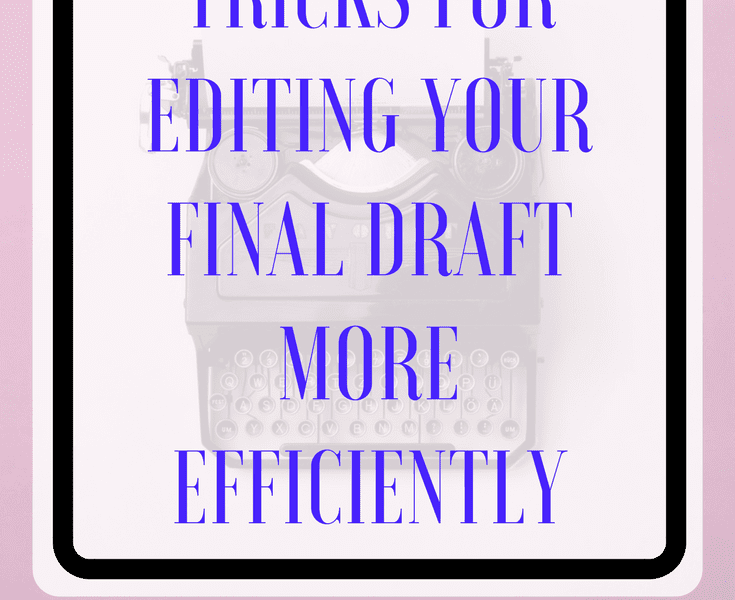Editing can be tricky when you’re down to the final round. You might feel burnt out. You’ve probably read your work over and over as you’ve been writing it. And if you’ve already reviewed for the big picture stuff—plot, story arc, characters, dialogue, and on and on—then a final review to make sure everything makes sense can be both the icing on the cake and the devil in the details.
My mom showed me a poem once where the last line said, “The typographical error is the olny thing you see.” She spent years typing on a typewriter, so when they read something to correct it, they were usually doing that last layer of editing. No one likes to use white out when they type, so you only changed misspellings or something that affected the way the document would be read.
(I’m so glad we work on computers now so we can obsess about every word!)
But the result is the same. If you print out your document and you missed something in the edit, you can guarantee that it will be in the heading or the largest word on the page or something else equally important.
AND IT WILL STADN OUT!
(Yes, I did that on purpose.)
When I had my corporate job, we did a yearly accomplishments report that was reviewed no less than 8 billion times by the team of writers. We each took a section to review obsessively. Then we traded with another person who would do the same. Then one person on the team read the whole report to make sure we hadn’t missed anything.
The crazy thing is that we were always catching errors, even after publication. No one is perfect, right?
Working on a magazine is a little terrifying in that respect. I shift into different modes multiple times and actually make the page larger and smaller on my screen to make sure I don’t miss any misspellings on the cover. I would feel awful if I missed something that important!
This is why I employ different techniques when I’m editing each article, both before and after the magazine is in layout. Much of this I learned from the writing team I worked with all those years on the accomplishments reports.
(I’m glad to be done with that part of my life, by the way.)
So it’s time to give that last-round editing a shake-up! Check out some of these tricks for catching the last few errors.
1) Time and space.
You need both to be able to edit anything well. If possible, set aside your work for a couple days and leave your desk for this final round. Then come back and do the final review. You will find it much easier to catch mistakes in flow, grammar, subtopics, punctuation, and all the other fun things to edit. Trust me. The best thing you can do is step back from your work and come back to it with fresh eyes.
2) Read aloud.
I know it sounds funny, but you can read what you wrote over and over in your head, and there will still be mistakes. Try a different approach once you think you have it finalized. Read the entire thing aloud to see how it will actually sound. Chances are that you will hear the mistakes that your brain missed in silent reading.
3) Start at the bottom.
Once you have good flow for your piece, start at the bottom of the piece for another review. You can read it paragraph by paragraph and then sentence by sentence to see if the smaller pieces sound ok. Do this through the entire work if it’s something small. For larger works, you may want to do this on parts that took heavy hits in editing to make sure you didn’t miss anything earlier. Sometimes our brains get tired by the time we get to the bottom of our own writing, so we gloss over things that we would see if we were just reading that paragraph. This can fix that problem!
4) Get inked.
Tattoo time! This book is a permanent fixture now, so let’s engrave it on your arm to proudly show the world.
Totally kidding!
Print out the piece you’re working on and read it silently and aloud to check one more time for errors. You would be surprised how many times we read a piece on the computer screen, only to print it and have a glaring, hideous error that seems so obvious that a blind-folded sloth could find it.
When you release your book to the world, you really want to shine, so thoroughly edit the piece to avoid distracting errors!
If you’re looking for more editing tips, check out some of my favorite blog posts about editing.

